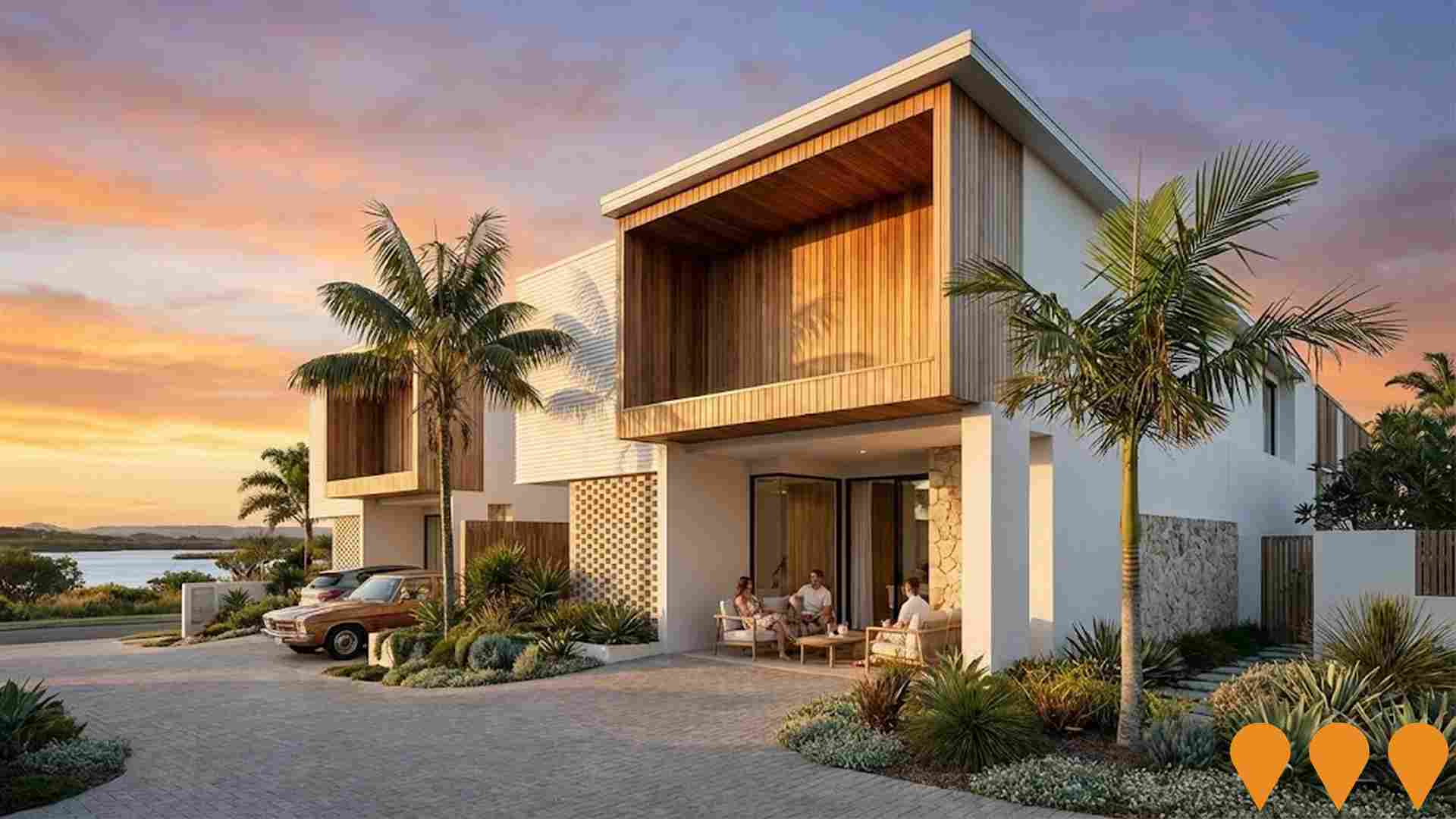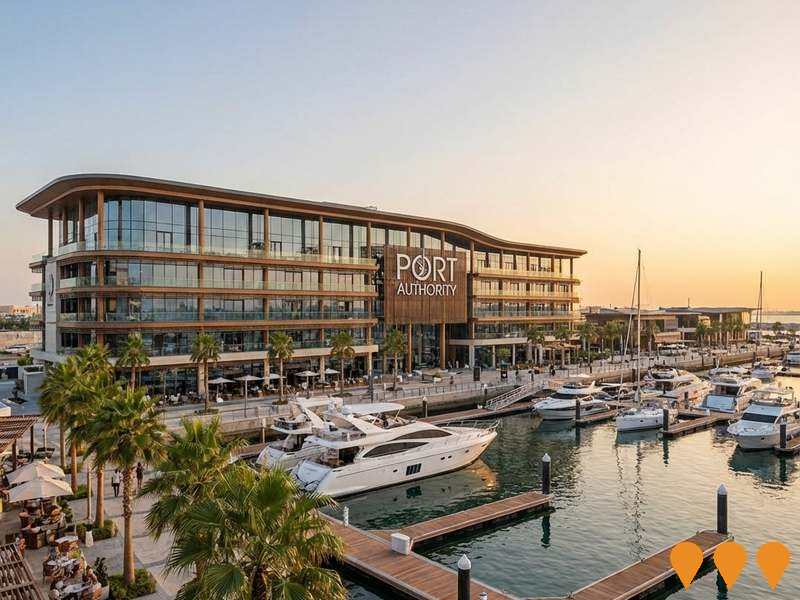Chart Color Schemes
est. as @ -- *
ABS ERP | -- people | --
2021 Census | -- people
Sales Activity
Curious about local property values? Filter the chart to assess the volume and appreciation (including resales) trends and regional comparisons, or scroll to the map below view this information at an individual property level.
Find a Recent Sale
Sales Detail
Population
Population growth drivers in Ballina are strong compared to national averages based on AreaSearch's ranking of recent, and medium to long-term trends
Ballina's population, as of August 2025, is approximately 18,844 people. This figure represents an increase of 215 individuals, a 1.2% rise since the 2021 Census, which reported a population of 18,629. The change is inferred from ABS's estimated resident population of 18,815 in June 2024 and an additional 145 validated new addresses since the Census date. This results in a density ratio of 521 persons per square kilometer, indicating significant space per person and potential for further development. Over the past decade, Ballina has shown resilient growth patterns with a compound annual growth rate of 0.9%, outperforming its SA4 region. Interstate migration contributed approximately 56.8% to overall population gains during recent periods.
AreaSearch uses ABS/Geoscience Australia projections for each SA2 area, released in 2024 with 2022 as the base year. For areas not covered by this data, AreaSearch employs NSW State Government's SA2 level projections, released in 2022 using 2021 as the base year. Growth rates by age group from these aggregations are applied to all areas for years 2032 to 2041. Based on projected demographic shifts, regional areas across the nation, including Ballina, are expected to experience above median population growth. By 2041, Ballina's population is projected to increase by 3,337 persons, representing a total increase of 17.5% over the 17-year period.
Frequently Asked Questions - Population
Development
Residential development activity is slightly higher than average within Ballina when compared nationally
Ballina has recorded approximately 35 residential properties granted approval annually over the past five financial years, totalling 177 homes. As of FY-26, 3 approvals have been recorded. On average, 3.3 people have moved to the area per dwelling built yearly between FY-21 and FY-25, indicating significant demand outpacing supply. This typically puts upward pressure on prices and increases competition among buyers.
New homes are being constructed at an average value of $750,000, suggesting developers target the premium market segment with higher-end properties. In FY-26, $35.6 million in commercial approvals have been registered, demonstrating high levels of local commercial activity. Compared to Rest of NSW, Ballina records markedly lower building activity, 68.0% below the regional average per person, which usually reinforces demand and pricing for existing dwellings. This is also below average nationally, reflecting the area's maturity and possible planning constraints. New building activity shows 54.0% standalone homes and 46.0% townhouses or apartments, providing options across different price points.
The estimated count of 467 people per dwelling approval reflects its quiet development environment. Population forecasts indicate Ballina will gain 3,303 residents by 2041. At current development rates, housing supply may struggle to match population growth, potentially heightening buyer competition and supporting price increases.
Frequently Asked Questions - Development
Infrastructure
Ballina has moderate levels of nearby infrastructure activity, ranking in the top 50% nationally
Changes to local infrastructure significantly influence an area's performance. AreaSearch has identified 31 projects likely impacting the area. Notable ones are New Ballina SES Headquarters, Total Tools Ballina, Ballina District Hospital Redevelopment, and Solhaven. The following details those most relevant:.
Professional plan users can use the search below to filter and access additional projects.
INFRASTRUCTURE SEARCH
 Denotes AI-based impression for illustrative purposes only, not to be taken as definitive under any circumstances. Please follow links and conduct other investigations from the project's source for actual imagery. Developers and project owners wishing us to use original imagery please Contact Us and we will do so.
Denotes AI-based impression for illustrative purposes only, not to be taken as definitive under any circumstances. Please follow links and conduct other investigations from the project's source for actual imagery. Developers and project owners wishing us to use original imagery please Contact Us and we will do so.
Frequently Asked Questions - Infrastructure
Ballina District Hospital Redevelopment
Planning is underway for the redevelopment of Ballina District Hospital, with $2 million allocated in the 2024-25 NSW Budget to progress the project. Recent flood risk assessments have indicated the current site is unsuitable for major expansion, prompting a review for a potential new greenfield site to serve the growing Northern Rivers population. The project aims to deliver enhanced medical facilities and patient accommodation, though a final location and construction timeline remain under review.
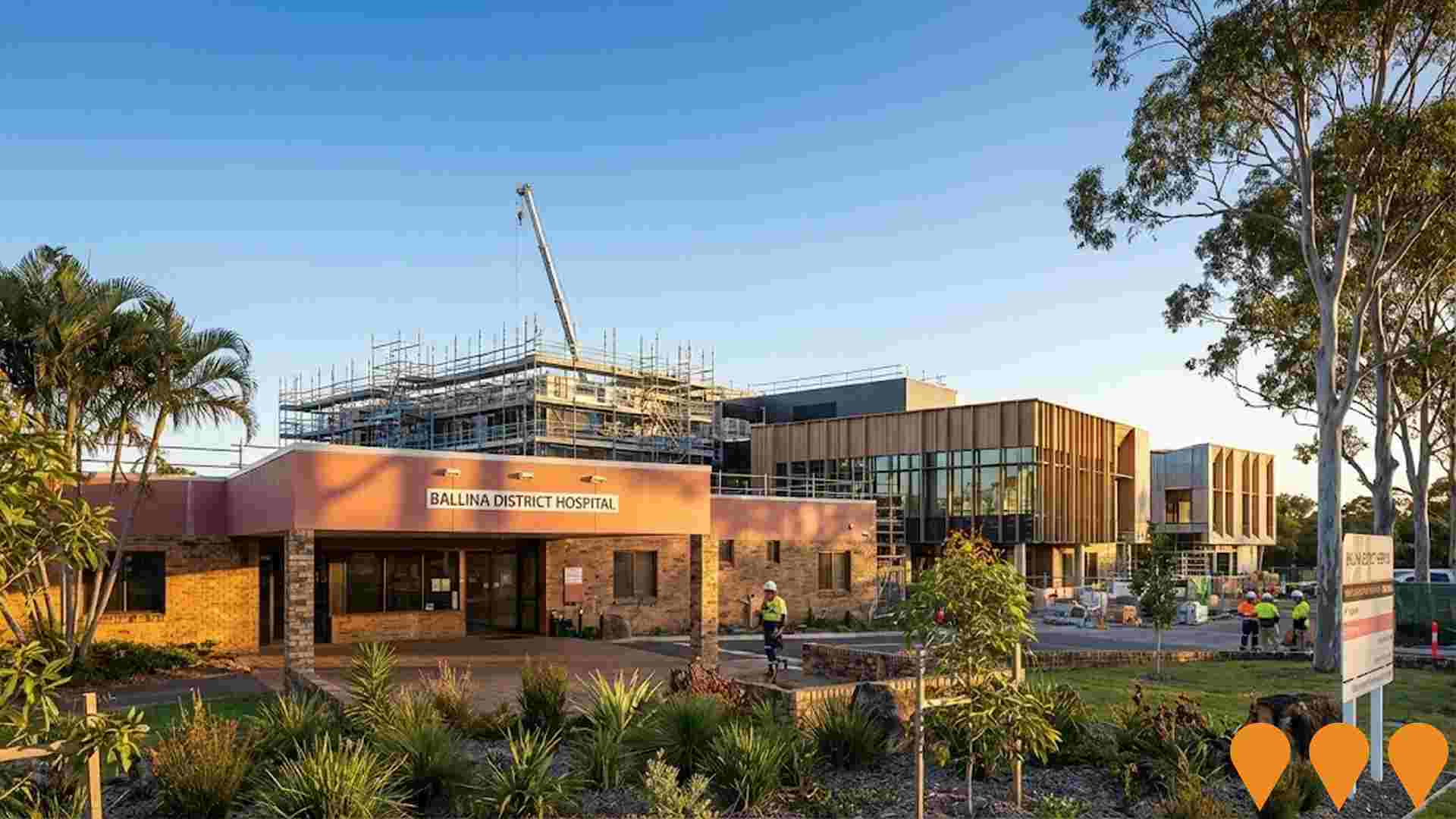
New Ballina SES Headquarters
New purpose-built NSW State Emergency Service (SES) Ballina Unit headquarters and Emergency Operations Centre. Replaces the outdated facility with a modern operations room, training areas, vehicle bays, equipment storage and enhanced staging area to improve flood, storm and emergency response across Ballina Shire. Construction commenced September 2025 and remains on track for completion in late 2026.
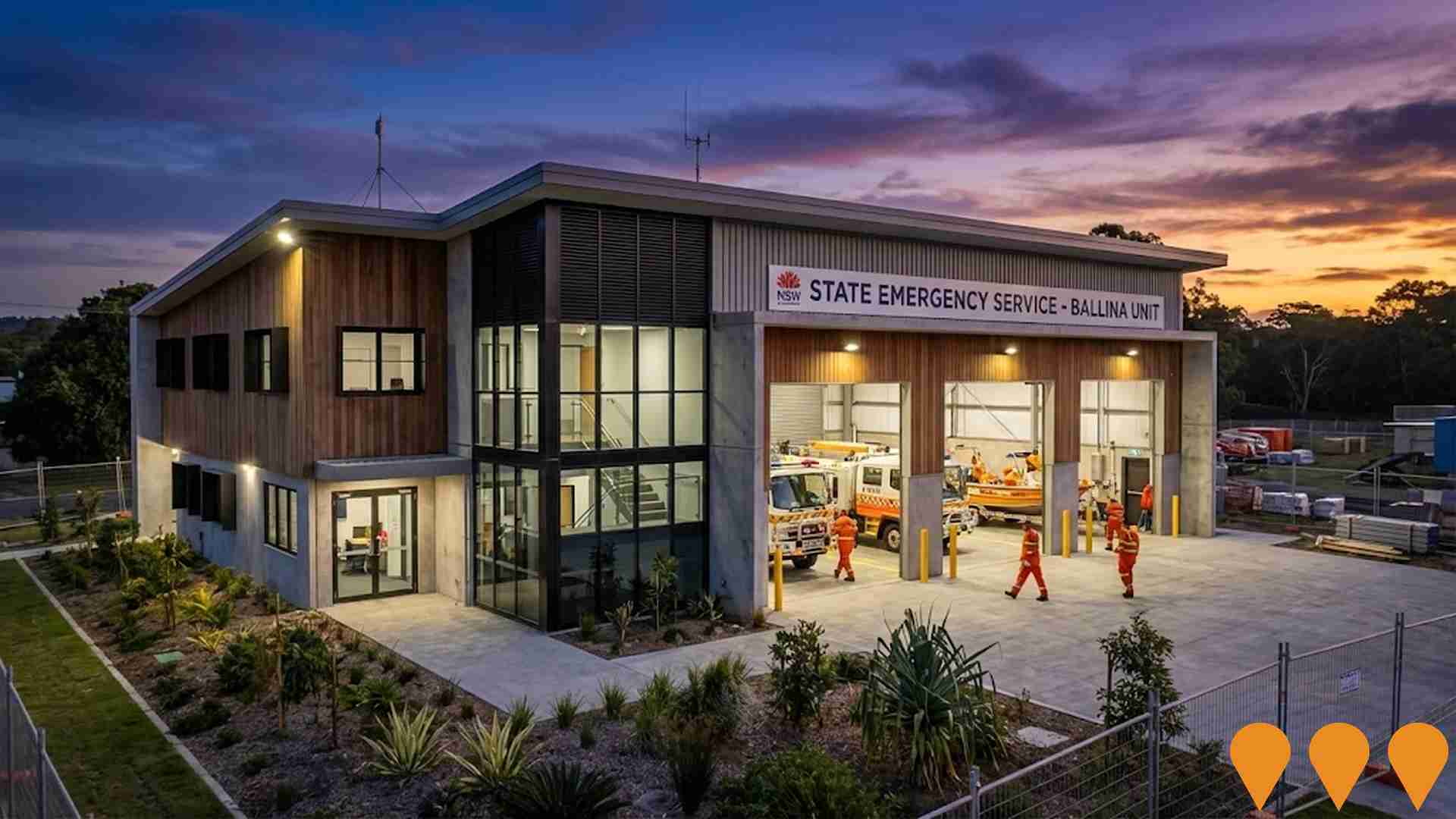
Ballina Byron Gateway Airport Terminal and Infrastructure Upgrade
Major airport infrastructure upgrade program including $20.68 million runway overlay completed in 2023 with new LED lighting, expanded terminal facilities with enhanced check-in area, departure hall, baggage collection capacity, upgraded car parking with 650 spaces, additional taxiways and jet parking bays to support increasing passenger volumes at one of Australia's busiest regional airports.
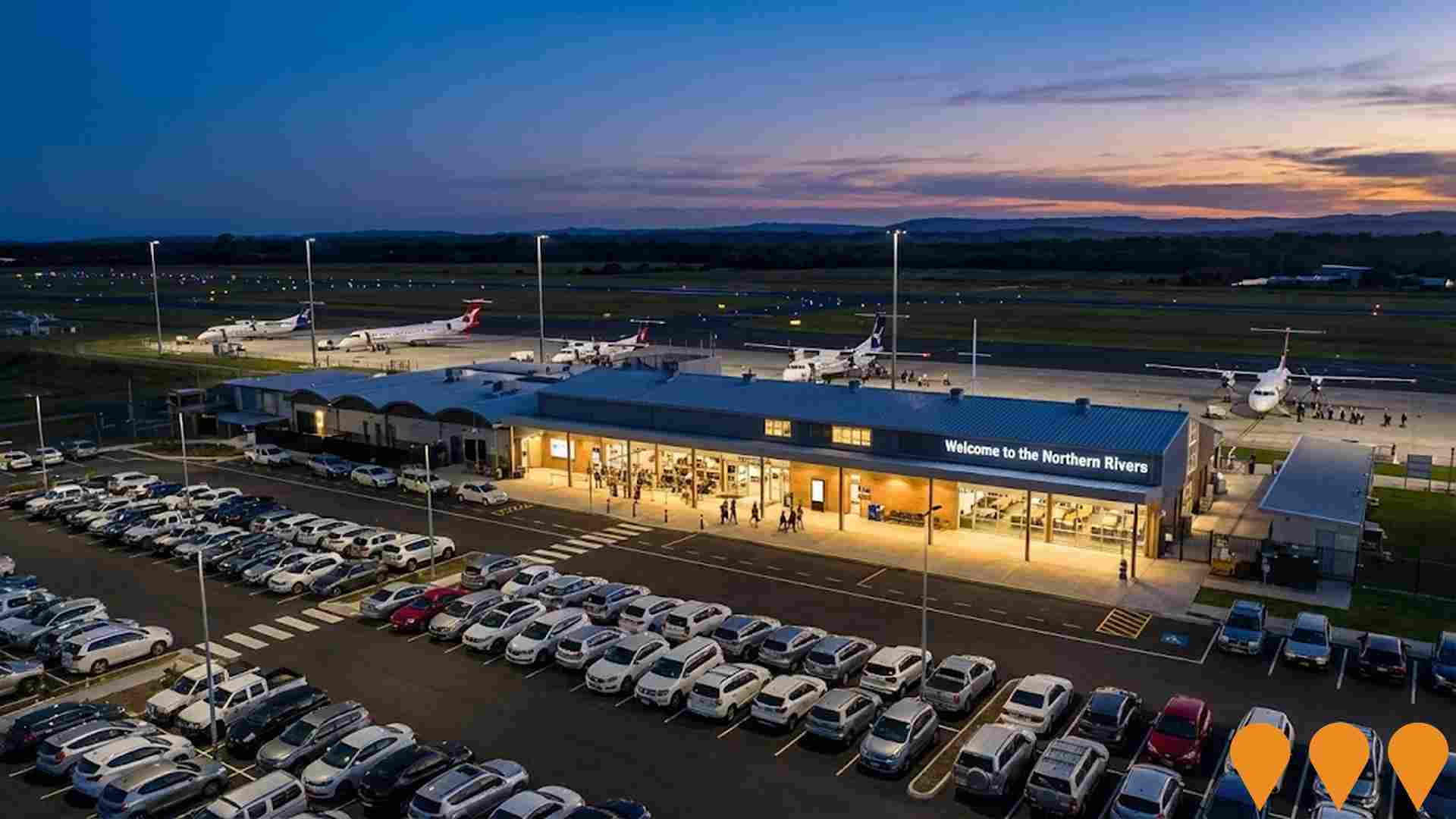
Crowley Aged Care Redevelopment
The $22 million multi-stage redevelopment and expansion of the Crowley aged care facility in Ballina, enhancing existing amenities and adding new facilities including a 42-room residential care building, two-story education centre with library and conference rooms, upgraded dining and entertainment areas, new administration building, cafe, and associated civil works to provide high-quality aged care services.
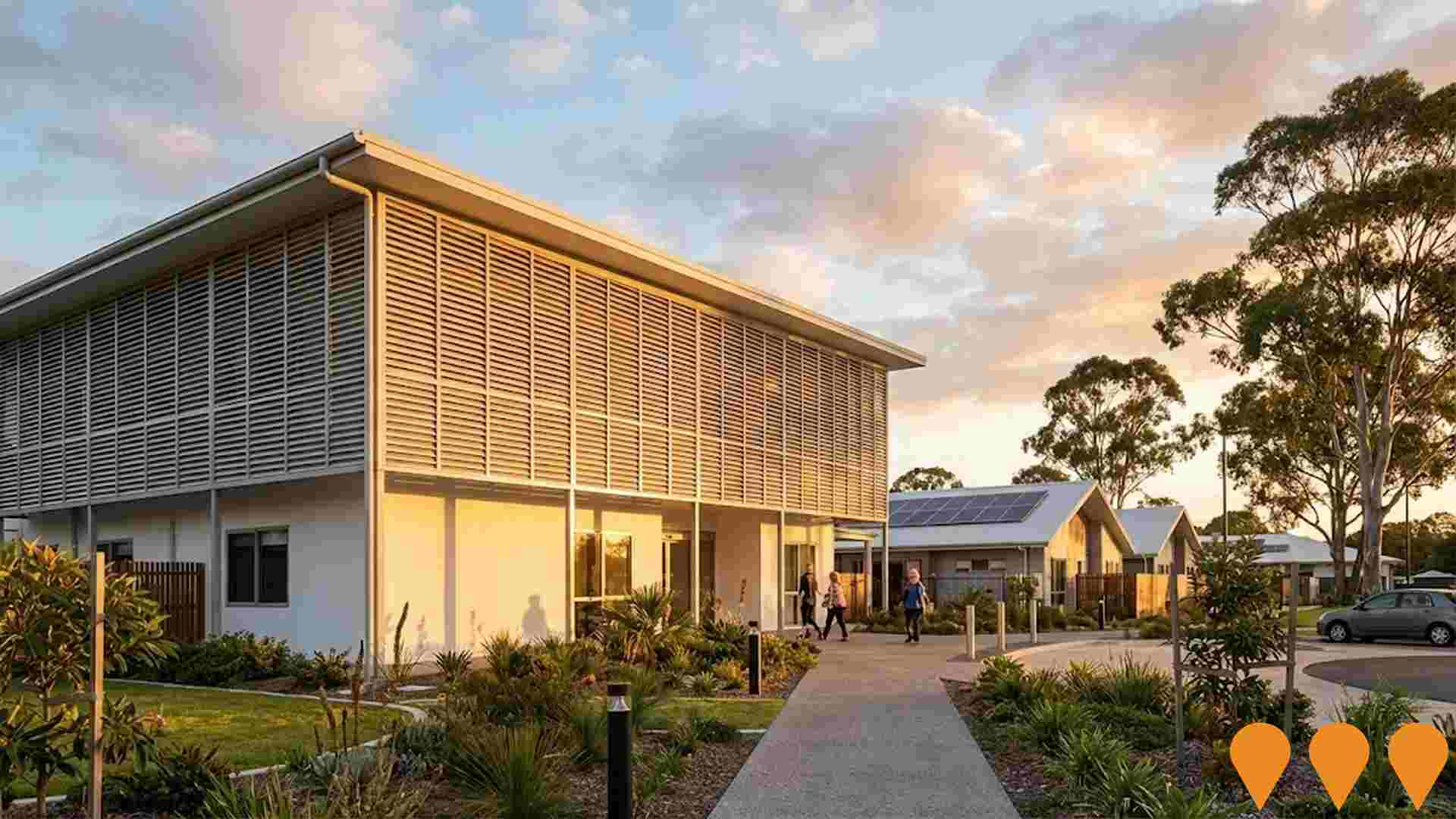
Total Tools Ballina
The Total Tools Ballina development is a large-format retail project featuring triple street frontage for enhanced visibility and accessibility. It aims to create a specialist trade and retail hub with Total Tools as the anchor tenant, emphasizing design excellence, customer experience, and sustainability.
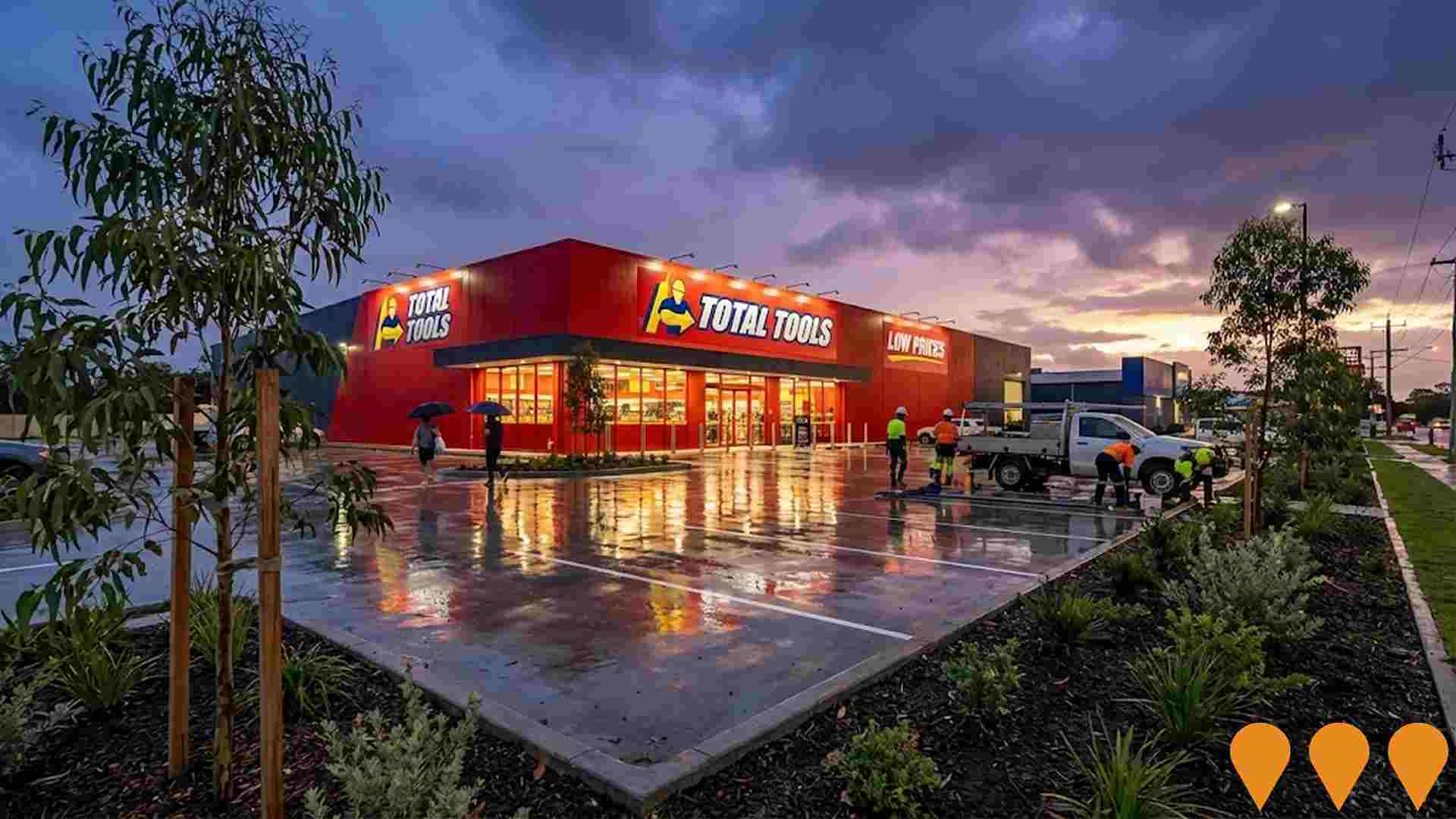
Solhaven
Solhaven is an impact-led micro-village blending residences, creative suites, curated retail, and diverse wellness options to foster creativity, connection, and community living in the Northern Rivers.

Ballina Airport Boulevard & Southern Cross Industrial Estate Expansion
Construction of new Airport Boulevard entrance road connecting Southern Cross Industrial Estate to the airport. Includes roundabout construction and industrial land development access.
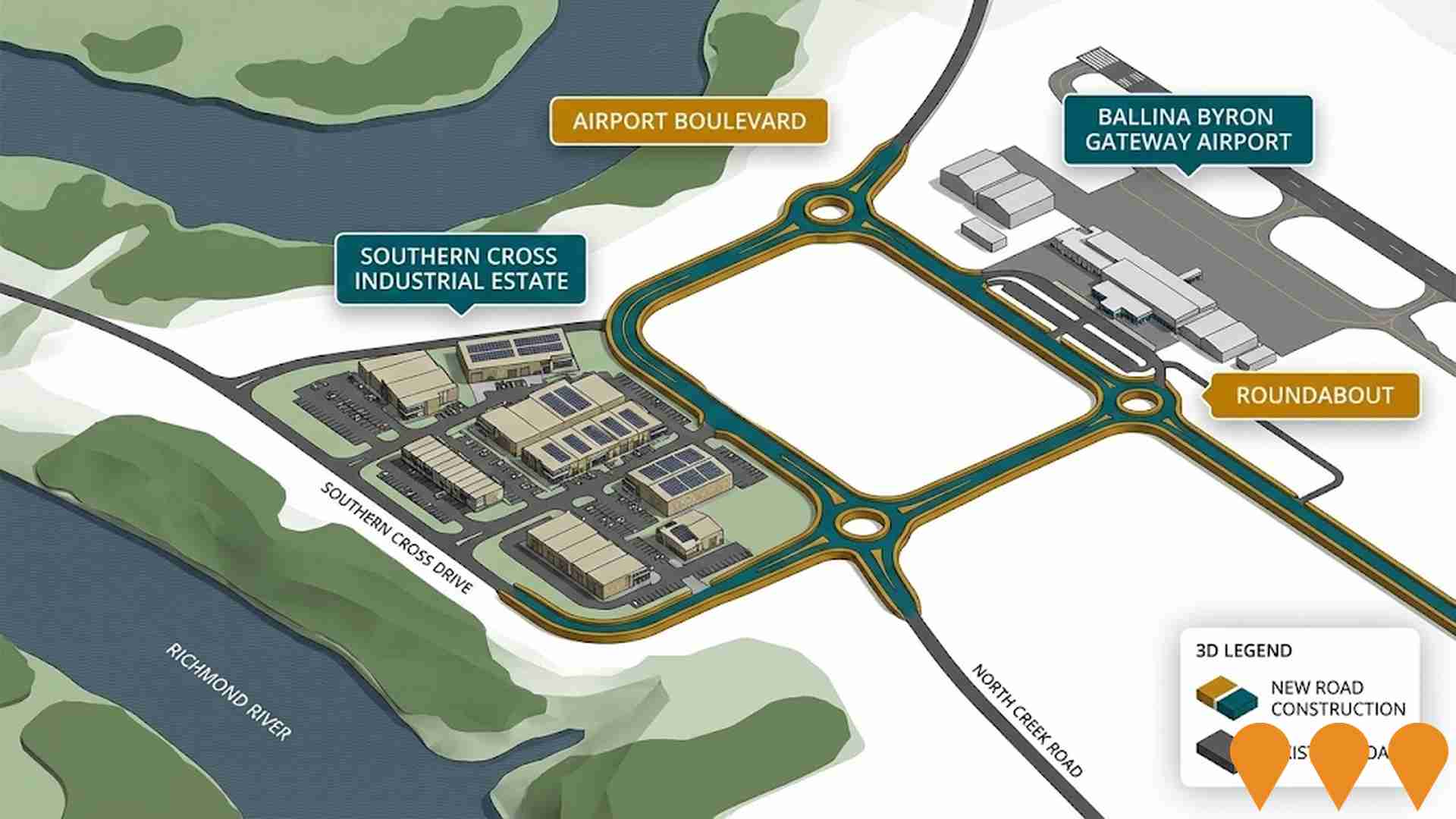
Southern Cross Industrial Estate Boeing Avenue
Development of Boeing Avenue within Southern Cross Industrial Estate providing new industrial facilities and business opportunities near the airport. Council releasing 12 serviced industrial lots.
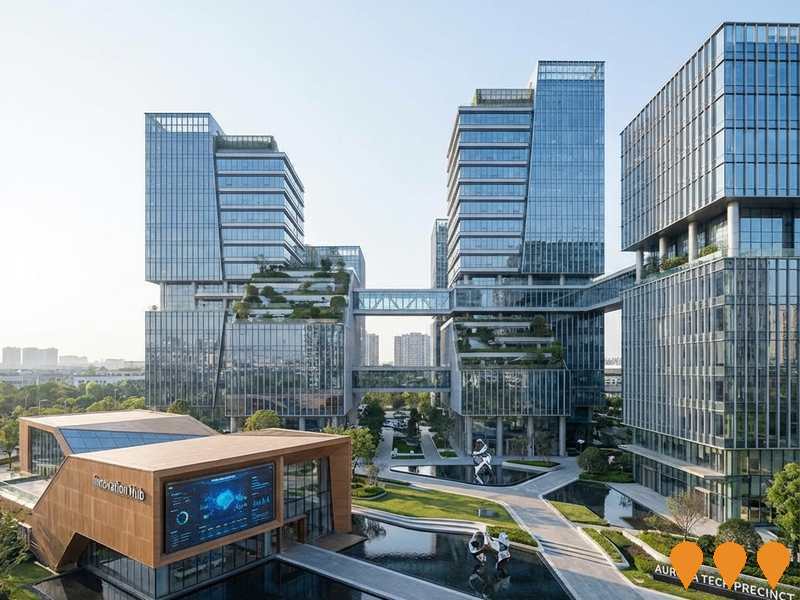
Employment
The employment landscape in Ballina presents a mixed picture: unemployment remains low at 3.5%, yet recent job losses have affected its comparative national standing
Ballina has a skilled workforce with essential services sectors well represented, and an unemployment rate of 3.5% as of June 2025. There are 7,618 residents in work, with the unemployment rate being 0.1% lower than Rest of NSW's rate of 3.7%.
Workforce participation is significantly lower at 47.0%, compared to Rest of NSW's 56.4%. Key industries of employment among residents are health care & social assistance, retail trade, and construction. Health care & social assistance has notable concentration with employment levels at 1.3 times the regional average. Conversely, agriculture, forestry & fishing shows lower representation at 2.1% compared to the regional average of 5.3%.
Many residents commute elsewhere for work based on Census working population data. Between June 2024 and June 2025, Ballina's labour force decreased by 4.8%, employment declined by 4.3%, causing unemployment to fall by 0.4 percentage points. Rest of NSW saw an employment decline of 0.1%, labour force growth of 0.3%, with unemployment rising by 0.4 percentage points during the same period. Jobs and Skills Australia's national employment forecasts from May 2025 project national employment growth of 6.6% over five years and 13.7% over ten years. Applying these projections to Ballina's employment mix suggests local growth of approximately 6.9% over five years and 14.2% over ten years, based on simple weighting extrapolation for illustrative purposes.
Frequently Asked Questions - Employment
Income
The area's income levels rank in the lower 15% nationally based on AreaSearch comparative data
AreaSearch's aggregation of ATO data for financial year 2022 shows Ballina had a median taxpayer income of $45,709 and an average income of $61,422. These figures are below the national averages of $49,459 (median) and $62,998 (average). Based on Wage Price Index growth of 12.61% since financial year 2022, estimated median income for Ballina as of September 2025 is approximately $51,473, with average income at $69,167. According to the 2021 Census, incomes in Ballina fall between the 10th and 22nd percentiles nationally. Income distribution shows 27.4% of Ballina's population earns between $400 and $799 annually, differing from regional levels where earnings predominantly range from $1,500 to $2,999. Housing affordability pressures are severe in Ballina, with only 80.6% of income remaining after housing costs, ranking at the 9th percentile nationally.
Frequently Asked Questions - Income
Housing
Ballina displays a diverse mix of dwelling types, with above-average rates of outright home ownership
Ballina's dwelling structures, as per the latest Census, consisted of 57.7% houses and 42.3% other dwellings (semi-detached, apartments, 'other' dwellings). In comparison, Non-Metro NSW had 75.1% houses and 24.9% other dwellings. Home ownership in Ballina was at 43.3%, with mortgaged dwellings at 21.6% and rented ones at 35.1%. The median monthly mortgage repayment in Ballina was $1,733, lower than Non-Metro NSW's average of $1,980. The median weekly rent figure for Ballina was $390, compared to Non-Metro NSW's $450. Nationally, Ballina's mortgage repayments were below the Australian average of $1,863, while rents exceeded the national figure of $375.
Frequently Asked Questions - Housing
Household Composition
Ballina features high concentrations of lone person households and group households, with a lower-than-average median household size
Family households constitute 60.0% of all households, including 17.1% couples with children, 30.1% couples without children, and 11.9% single parent families. Non-family households account for the remaining 40.0%, with lone person households at 35.8% and group households comprising 4.2% of the total. The median household size is 2.1 people, which is smaller than the Rest of NSW average of 2.4.
Frequently Asked Questions - Households
Local Schools & Education
Educational outcomes in Ballina fall within the lower quartile nationally, indicating opportunities for improvement in qualification attainment
Ballina faces educational challenges with university qualification rates at 21.9%, significantly lower than NSW's average of 32.2%. Bachelor degrees are most prevalent at 15.8%, followed by postgraduate qualifications (3.7%) and graduate diplomas (2.4%). Trade and technical skills are prominent, with 38.8% of residents aged 15+ holding vocational credentials - advanced diplomas (11.7%) and certificates (27.1%). A substantial 24.0% of the population is actively pursuing formal education, including 8.0% in primary, 6.6% in secondary, and 3.0% in tertiary education.
Ballina operates a robust network of 8 schools educating approximately 3,283 students, with typical Australian school conditions (ICSEA: 985) indicating balanced educational opportunities. The educational mix includes 3 primary, 1 secondary, and 4 K-12 schools. School capacity exceeds residential needs at 17.4 places per 100 residents versus the regional average of 13.2, suggesting Ballina serves as an educational center for the broader region.
Frequently Asked Questions - Education
Schools Detail
Nearby Services & Amenities
Transport
Transport servicing is moderate compared to other areas nationally based on assessment of service frequency, route connectivity and accessibility
Ballina has 352 active public transport stops, consisting of both train and bus services. These stops are served by 66 different routes that together facilitate 1,350 weekly passenger trips. The city's transport accessibility is rated excellent, with residents usually located within 100 meters of the nearest stop.
On average, there are 192 daily trips across all routes, translating to approximately three weekly trips per individual stop.
Frequently Asked Questions - Transport
Transport Stops Detail
Health
Health performance in Ballina is a key challenge with a range of health conditions having marked impacts on both younger and older age cohorts
Ballina faces significant health challenges, with various conditions affecting both younger and older residents.
Private health cover stands at approximately 51%, covering around 9,535 people. The most prevalent medical conditions are arthritis (affecting 11.4% of residents) and mental health issues (impacting 9.7%). In contrast, 58.6% of Ballina's population reports no medical ailments, compared to 68.0% in the rest of NSW. The area has a higher proportion of seniors aged 65 and over, at 33.3% or 6,278 people, than the state average of 23.6%. Despite this, health outcomes among seniors are better than those of the general population.
Frequently Asked Questions - Health
Cultural Diversity
Ballina is considerably less culturally diverse than average when assessed alongside AreaSearch's national rankings for language and cultural background related metrics
Ballina's cultural diversity was found to be below average, with 89.5% of its population being citizens, 86.7% born in Australia, and 94.8% speaking English only at home. Christianity was the main religion in Ballina, comprising 54.5% of people, compared to 42.2% across Rest of NSW. The top three ancestry groups were English (32.4%), Australian (28.6%), and Irish (10.2%).
Notably, Scottish representation was higher at 8.9%, Australian Aboriginal at 3.4%, and French at 0.5%, compared to regional averages of 9.0%, 2.2%, and 0.9% respectively.
Frequently Asked Questions - Diversity
Age
Ballina ranks among the oldest 10% of areas nationwide
The median age in Ballina is 52 years, significantly higher than Rest of NSW's average of 43 years and also above the national norm of 38 years. Compared to Rest of NSW, the 75-84 age cohort is notably over-represented in Ballina at 12.1%, while the 5-14 year-olds are under-represented at 8.9%. This concentration of the 75-84 cohort is well above the national average of 6.0%. Between 2021 and present, the 35 to 44 age group has grown from 10.1% to 11.1%, while the 65 to 74 cohort has declined from 17.0% to 15.5% and the 55 to 64 group has dropped from 13.5% to 12.4%. Population forecasts for Ballina in 2041 indicate substantial demographic changes, with the 85+ cohort projected to grow by 73%, adding 786 residents to reach 1,857. In contrast, population declines are projected for the 55-64 and 15-24 age cohorts.

